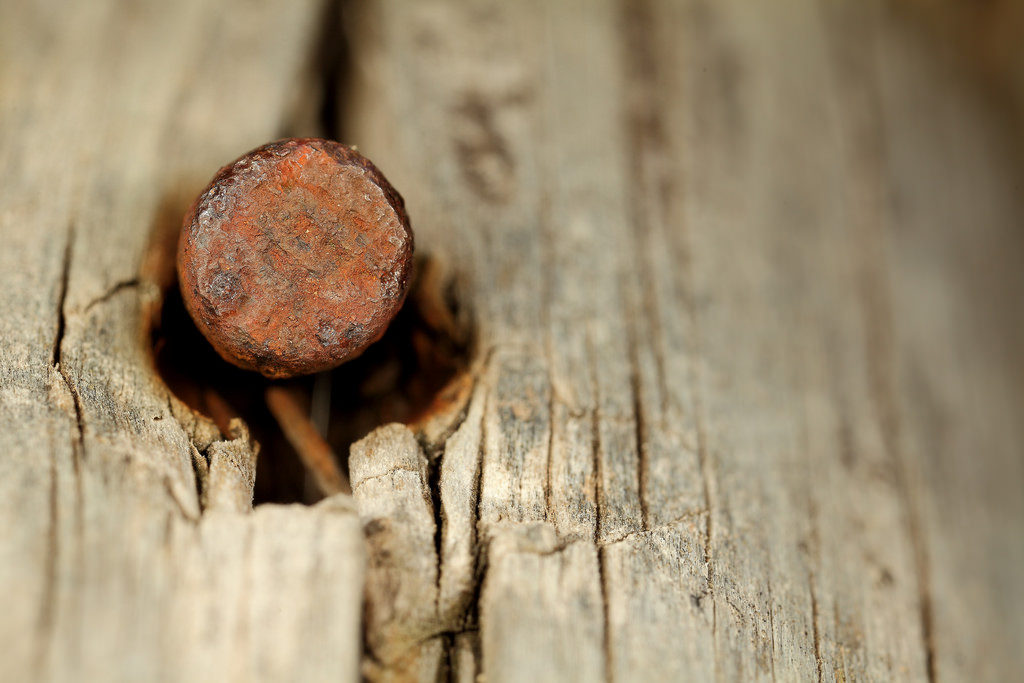Why Are My Nails So Rusty In Treated Wood?

Damp wood can cause metals to corrode. This is partly because wood is slightly acidic. When a metal fastener is embedded in wet wood, conditions are created that can accelerate the corrosion of the metal. The corrosion products often result in slow deterioration of the wood surrounding the metal. Corrosion of the fastener combined with deterioration of the adjacent wood causes loss of strength of the joint and weakening of the structural integrity of the assembly. The exposed end of a steel fastener in damp wood quickly shows evidence of hydroxyl ion (OH-) formation. The exposed head of a metal fastener can become the cathode and the shank is the anode of a galvanic corrosion cell.
Dissimilar metals in contact with one another in a corrosive environment form a galvanic cell that results in accelerated corrosion of the less corrosion-resistant metal and very little attack of the more resistant metal. Thus, with dissimilar metals in electrical contact, the more noble metal becomes the cathode and the less noble one becomes the anode. Also, if the anode is iron, then ferrous ions can initiate degradation of the adjacent wood.
Corrosion of certain metals could be a problem in waterborne salt-treated wood in contact with soil when the moisture level of the wood is high. This led to a resurgence in galvanizing and other coatings for fasteners and a reformulation of the copper in many copper-based wood preservatives.
REFERENCE: Baker, A. J., ‘‘Corrosion of Metal In Wood Products,” Durability of Building Materials and Components. ASTM STP 691. P. J. Sereda and G. G. Litvan, Eds., American Society for Testing and Materials, 1980, pp. 981-993. ABSTRACT: A description is given of the source of metal corrosion products that caus
Meet the Author
Dr. Todd Shupe is the President of Wood Science Consulting, LLC. He is a well-recognized expert on wood forensics, wood preservation, wood decay and degradation, and wood species identification. He has a broad background in new product development, quality management, and marketing and sales in both the public and private sectors. For more information please visit DrToddShupe.com.
We welcome your comments below.
Thank you for visiting. We trust that you have enjoyed reading our articles.
Liked this post? Read more below or search for more topics . . .

